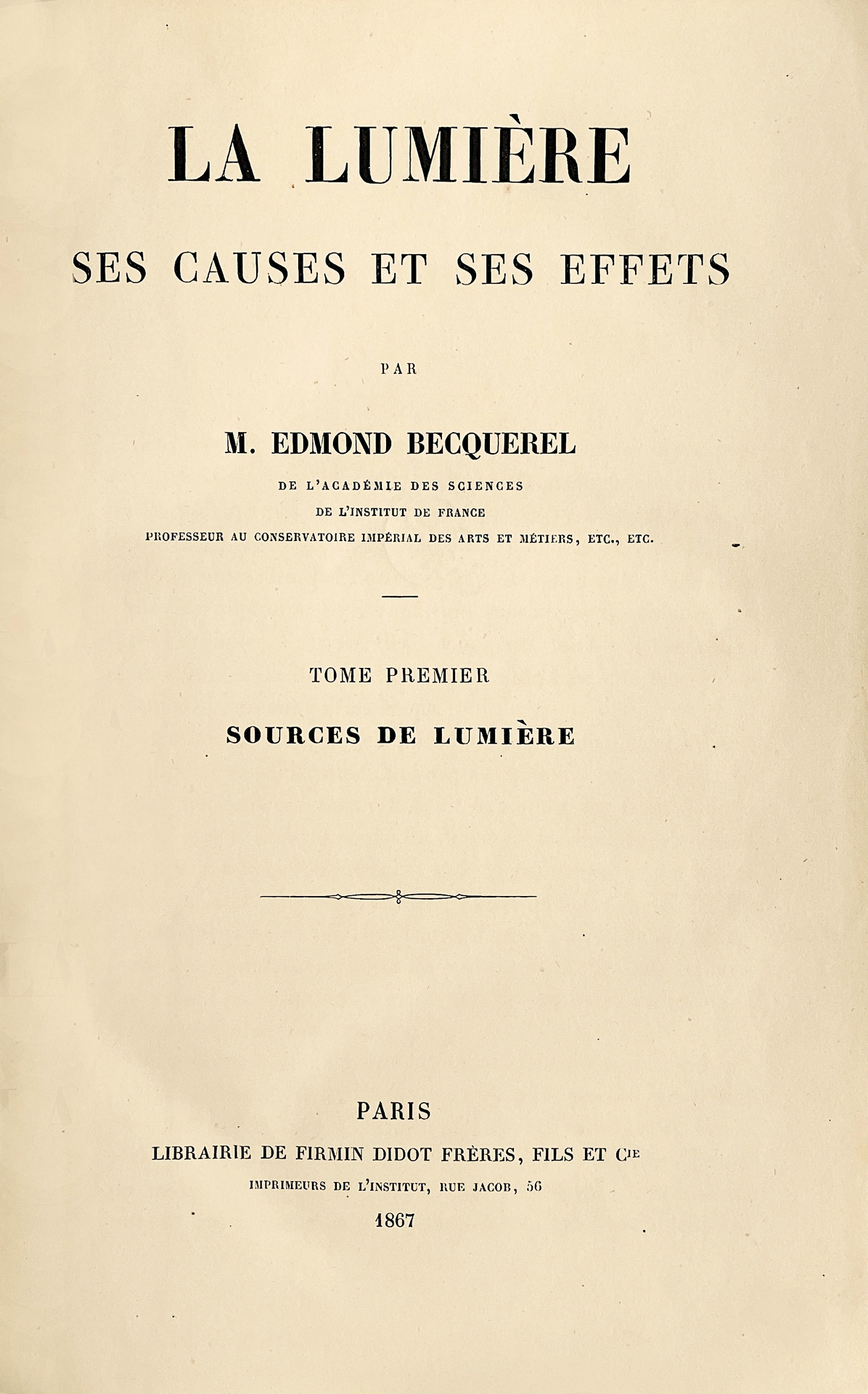Paris, Librairie de Firmin Didot frères, 1867-1868.
2 volumes 8vo [226 x 148 mm] of: I/ (2) ll., iii pp., 431 pp, (1) l., 6 plates out of pagination with figures including 4 in colour and 3 folded (1 representing L’aurore boréale observée à Bossecop le 9 janvier 1834) ; II/ (2) ll., 377 pp., ( 1) l. of errata, 2 plates out of pagination including 1 in colour. Original beige boards, blue edges. Contemporary binding.
First edition of this important treatise on light.
DSB, I, 556; Poggendorff III 93.
This study of phosphorescence and other light effects was very important for the development of photography.
Edmond Becquerel is the author of important discoveries which particularly concern luminescence. The work also deals with electricity, photo-chemistry, photography and human vision.
“’La lumière, ses causes et ses effets’ is the only work published under the sole name of Edmond Becquerel to bring together much of his research. He claims it as ‘purely experimental’. This work was indeed received by his contemporaries, not as a treatise of scientific optics, much less a mathematical study of the laws of light, but as a collection of carefully observed facts, skillfully coordinated, and of which the whole nevertheless constitutes the most interesting monograph on the subject. In fact, we do not find any mathematical development and few calculations in the work of E. Becquerel. The preeminence accorded to experiment, on the other hand, implies the development of experimental methods highlighting unknown physical effects and the invention of original or more sensitive instruments. Thus E. Becquerel is undoubtedly best known by his contemporaries for his actinometer intended to measure the phosphorescence of a body…
In the field of phosphorescence, Becquerel replaced a heterogeneous mass of qualitative information by an organized program of quantitative research and a planned collection of data. He appeared in the 1860s as the master in the field, his large two-volume work “La Lumière, ses causes et ses effets” published in 1867-68, marking the end of an era”. (Christine Blondel).
The work is illustrated with 76 figures inside the text and 8 plates out of pagination including 5 in colours and 4 folded.
Precious copy preserved in its contemporary boards.
See less information








